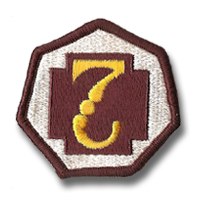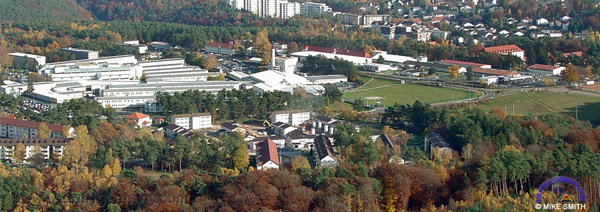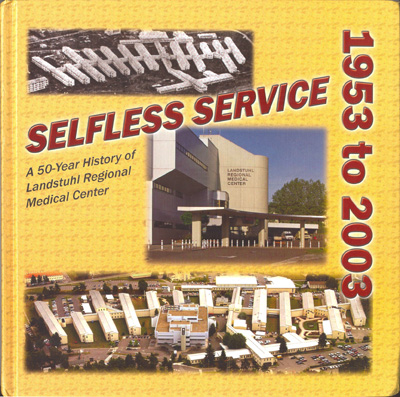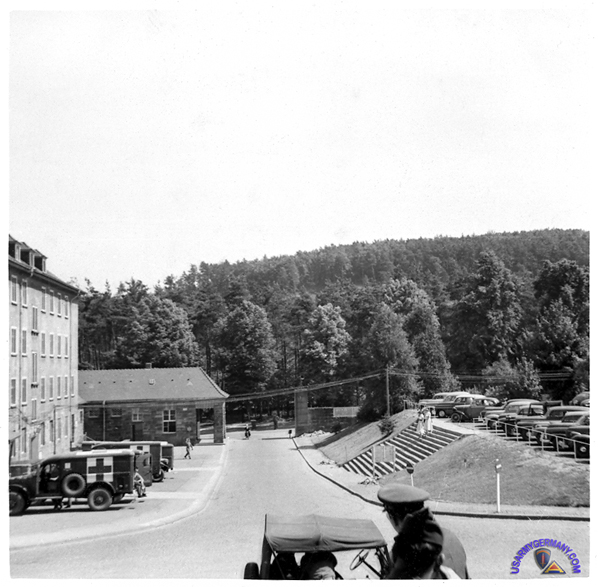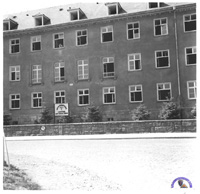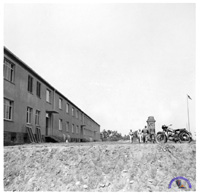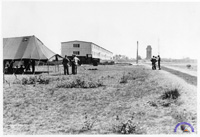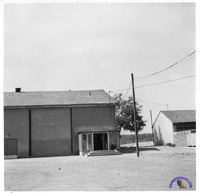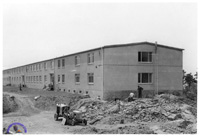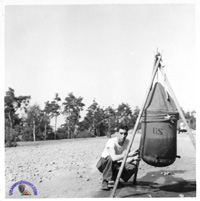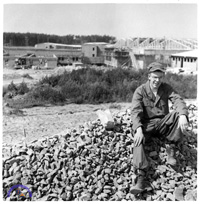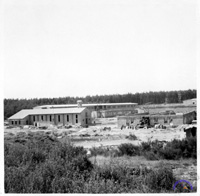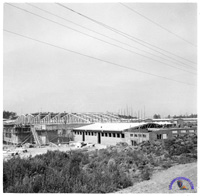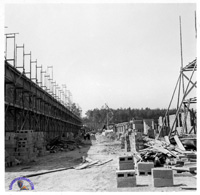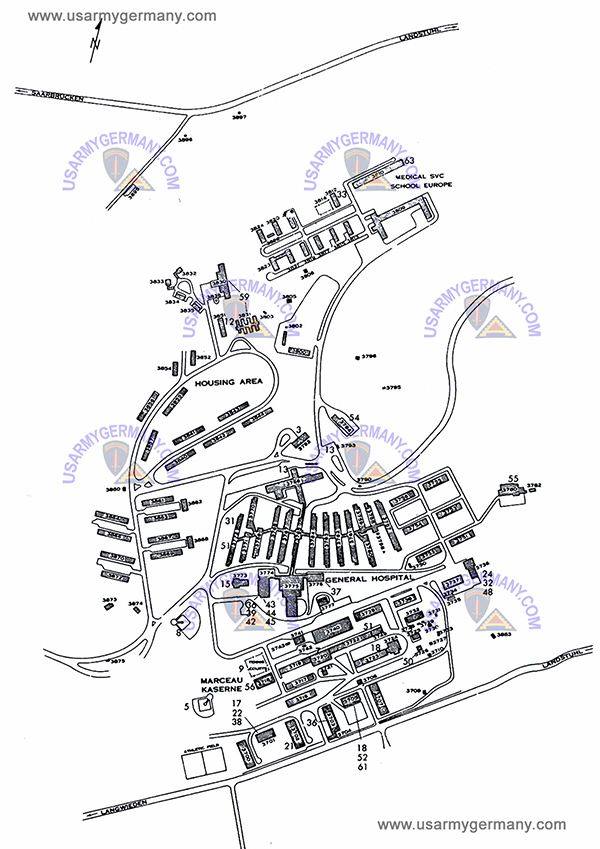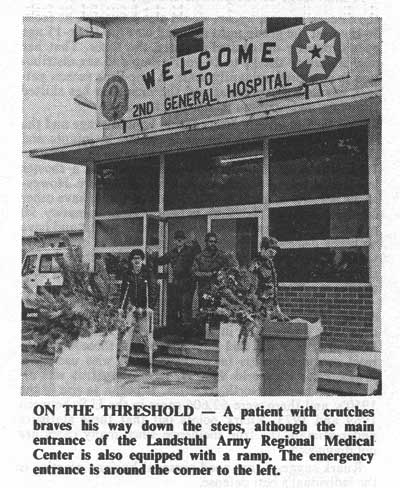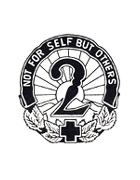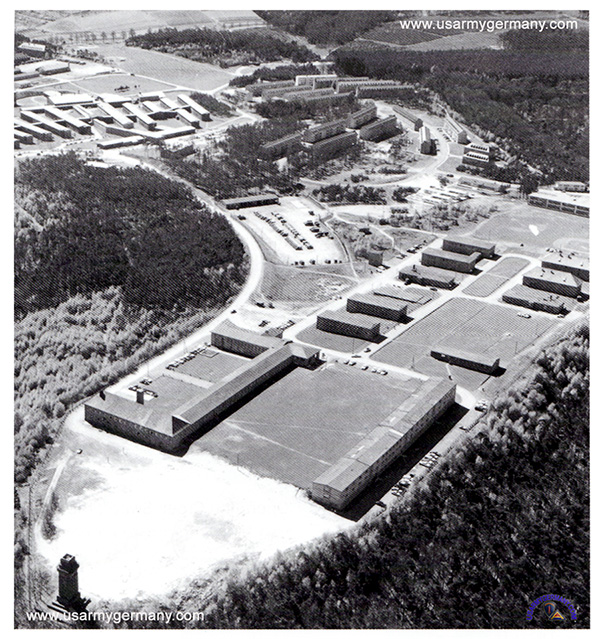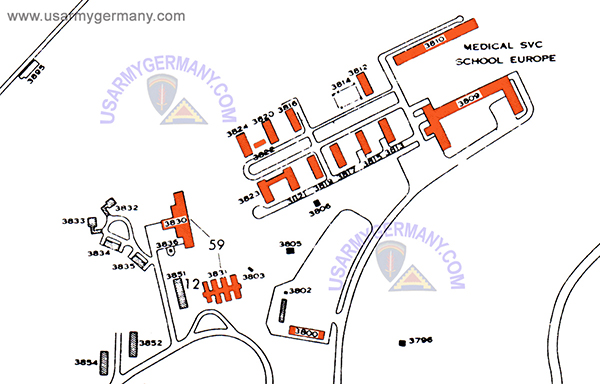| If you do
NOT see the Table of Contents frame to the left of this page, then
Click here to open 'USArmyGermany' frameset |
||||||||||||||||||||||||||||||||||||||||||
USAH Landstuhl |
||||||||||||||||||||||||||||||||||||||||||
|
|
||||||||||||||||||||||||||||||||||||||||||
|
||||||||||||||||||||||||||||||||||||||||||
|
|
||||||||||||||||||||||||||||||||||||||||||
| USAH Landstuhl History | ||||||||||||||||||||||||||||||||||||||||||
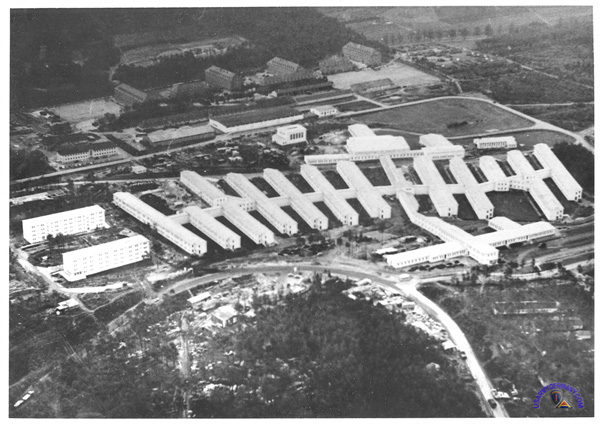 Aerial view of completed Landstuhl hospital complex (constructed 1952-53) (Fred Nanamaker) |
||||||||||||||||||||||||||||||||||||||||||
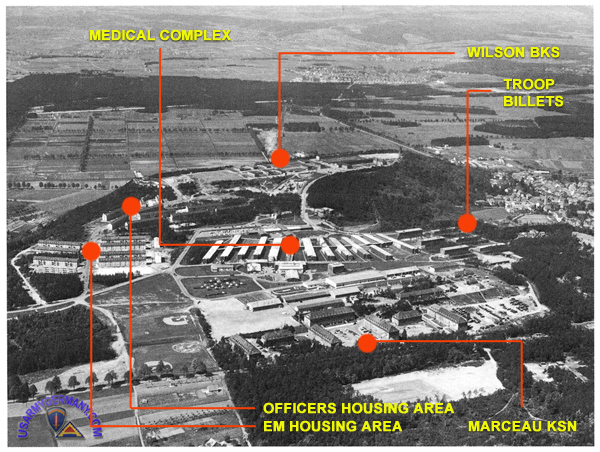 Landstuhl installations, late 1960s |
||||||||||||||||||||||||||||||||||||||||||
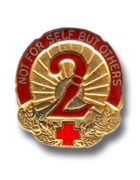 2nd General
Hospital DI
2nd General
Hospital DI |
||||||||||||||||||||||||||||||||||||||||||
|
||||||||||||||||||||||||||||||||||||||||||
| 320th General Hospital | ||||||||||||||||||||||||||||||||||||||||||
| 1952 | ||||||||||||||||||||||||||||||||||||||||||
 Sign in front of main entrance to 320th GH, c. 1953 (Deirdre Bradway) |
||||||||||||||||||||||||||||||||||||||||||
| (Source: Fred Nanamaker) | ||||||||||||||||||||||||||||||||||||||||||
| I was at LRMC in 1952
assigned to the 34th Gen Hosp. I have a picture of the hospital complex under
construction and other pictures of the area. They sure bring back
memories from being stationed there. Never realized at the time I was
there 1952-53, the complex would end up the largest military hospital outside
the United States. I had the honor of being a patient at the 320th General Hospital. |
||||||||||||||||||||||||||||||||||||||||||
| 2nd General Hospital | ||||||||||||||||||||||||||||||||||||||||||
| 1968 | ||||||||||||||||||||||||||||||||||||||||||
| (Source: STARS & STRIPES, April 20, 1968) | ||||||||||||||||||||||||||||||||||||||||||
| The commander of the US Army General Hospital, Landstuhl (currently Col William A. Collins, Jr.) also wears several other hats: |
||||||||||||||||||||||||||||||||||||||||||
| 1969 | ||||||||||||||||||||||||||||||||||||||||||
| (Source: Email from James O'Brien) | ||||||||||||||||||||||||||||||||||||||||||
| My info is that I was assigned to the Military Police Platoon, 2nd General Hospital, Landstuhl Army Medical Center (LAMC). I believe while I was there the name was changed to Landstuhl Medical Service Area (LMSA). It was my first assignment out of MP AIT. I was there from approximately August 1969 to August 1970. In 1970 I was sent to Vietnam. The MP Station was next to the Fire Station. I believe if you came up the hill and went through the front gate, you would have turned left. I remember race relations being tense then in Germany. I have pictures, but would have to go searching for them. While there I and another MP built a cyclone fence enclosure and we each had a German Shepard. We were fined by the Germans for cutting down a tree. When I left in 1970 I shipped the dog home to the States. The Air Police at Ramstein would help us train them. They were not military working dogs. Just our own pets. I remember that our Provost Marshal was a 1LT by the last name of McClanahan. Robert may have been his first name. I think he was followed by a CPT Stewart. A German civilian who worked in the MP office was Hans Luhmert -- or maybe Lummert. One of our jobs when on patrol was to go into the theatre at night and make sure everyone there for the movie stood for the playing of the National Anthem. We also would make a daily run to K-town with an employee from the American Express office. As we were not welcome in the enlisted or NCO club we had our own club in the basement of the WAC building. It would have been on the left as you were exiting the side gate. I attended traffic accident investigation school at Oberammergau in Nov 1969. I was there at Thanksgiving in 1969. It was a three week school. |
||||||||||||||||||||||||||||||||||||||||||
| (Source: Email from Dale Coenen) | ||||||||||||||||||||||||||||||||||||||||||
| I was a medical supply clerk at 2nd General Hospital from January 1970 thru January 1972. I do not remember any MP’s attached to our post. We had to get them from K-town if they were needed. There were no gate keepers during that time. We lived in the barracks by the back gate with the little schnitzel stand across the road. The whole building smelled like hash almost all the time. Race relations were really bad. The EM club was pretty much for blacks only. I was E-5 so if I wanted to go to a bar I went to the NCO club by the other gate or to a bar owned by Sgt Rich down the hill. The post was run by a General Vortabrugge (spelling?) at first and then a General Black who always had egg yolk on his tie. The thing I liked about duty at this place was at quitting time on Friday, no one care where you were until starting time on Monday. I do remember that no matter what was going on almost everyone toed the line when on duty and took pride in their job. I also remember getting woken up many times to donate blood for car crash victims. The officers I remember from supply & service were Major Snell, Captain Wise, Captain McAdams and Lt Saunders. My boss was Sgt Don Brooks. Some building use information for Landstuhl installation, early 1970s: |
||||||||||||||||||||||||||||||||||||||||||
|
||||||||||||||||||||||||||||||||||||||||||
| 1979 | ||||||||||||||||||||||||||||||||||||||||||
| (Source: Email from Jim McKinney) | ||||||||||||||||||||||||||||||||||||||||||
| I was stationed in the US Army at Landstuhl ARMC for almost three years, from 1979-1982...with a 3 month interlude with the 1st Armored Division at Monteith Kaserne in Fuerth as well. I worked in the Patient Administration Division at LARMC, mostly in the Admission/Disposition office as the overnight supervisor. I was responsible for the daily A&D sheet and maintained the hospital census report. About the only excitement I was involved in was being on duty when the casualties from the failed rescue of the Iranian hostages were brought to LARMC...I was sworn to secrecy by my boss; the hospital commander, Col. Hitzelberger; and a man in a black suit, earpiece...and rather nasty looking weapon. I had to prepare records and paperwork on all of the victims and keep their presence at LARMC a secret which was interesting given that there were several members of the press hovering around trying to get a story...lol. When I was with 1st AD...my main job was to rake leaves, play football, and serve as an interpreter for the Company Commander and First Sergeant.. I had a great time in W. Germany...wish I could have served my entire time there! |
||||||||||||||||||||||||||||||||||||||||||
| ADDITIONAL INFORMATION The things I can identify right away are the mess hall and PX/snack bar...the mess hall is located in the hospital, at the back end near that main hallway...it was completed in mid 1980...also in the back end near the mess hall was a small newsstand and the American Express bank. The snack bar/PX/barber shop were all in the back of the complex, toward the back door. The map you sent me is older than I expected...lol...I was looking at it trying to figure out where the movie theatre, bowling alley, 10th Med Lab, and Company A and B barracks were ( I was in both companies...my division moved from A to B in 1980). I can tell you that, walking from the back door, the helipad was to the right, in an open field...a road/path carried us past that and up a hill to a sidewalk that passed by the movie theatre and softball field...a stairway was located to the right of the Company B barracks, with the Company A Barracks ahead at a 90 degree angle and a building that housed the education area, the Alcohol Treatment program, and interestingly enough the wine store. Directly across from the A barracks was the admin/personnel building...the road that passed between the B barracks and the admin building led up to 10th Med Lab and the bowling alley...the buildings to the left of the hospital...the ones numbered 3861 through 3872 (I think) were the single officers' quarters...and to the right of the hospital were the married officers' quarters. FYI...when I was there...the wards were numbered 1-14 from left to right, but they were numbered weird...with A/B on the 1st floor and C/D in the 2nd...and were as follows: Trying to remember where X-Ray was...not quite sure...I do remember that the info desk was in the front, along with outpatient medical records...the dental clinic was up the stairs a little ways in, with a small flower shop below it...the emergency room was to the left, and to the right was my division, Patient Admin...hope this helps. |
||||||||||||||||||||||||||||||||||||||||||
| 1982 | ||||||||||||||||||||||||||||||||||||||||||
| (Source: MEDCOM Examiner, June 1982) | ||||||||||||||||||||||||||||||||||||||||||
| LARMC: 'not for self, but others' By Ruth Hamill Editor's note: This is the second in a series of articles highlighting 7th MEDCOM facilities. Future issues of the MEDCOM Examiner will feature each of the MEDCENs. MEDDACs and other MEDCOM treatment facilities in a series of articles designed to further acquaint people throughout 7th MEDCOM with each activity. Landstuhl is a city, a post and an Army Regional Medical Center. These three separate identities mesh to produce a superior health care facility and referral center, a multi-facility post and a historical and cultural living environment available to residents and visitors alike. |
||||||||||||||||||||||||||||||||||||||||||
|
||||||||||||||||||||||||||||||||||||||||||
|
||||||||||||||||||||||||||||||||||||||||||
| Available specialties Today, LARMC is a referral and treatment center for more than 40 medical and surgical specialties. It is the only U.S. military medical facility in Europe for the following 13 specialties: As of late 1981, there were 92 military Medical Corps officers assigned to LARMC (89 Army, two Air Force and one Navy). There were also 16 local national physicians, nine U.S. civilian physicians, 85 members of the Army Nurse Corps, 11 Army Medical Specialist Corps officers and 46 Medical Service Corps Officers. The staff was at that time supported by 815 enlisted personnel and 554 civilian employees. Col. Anton L. Hitzelberger has been the commander at LARMC since August 1979. He also serves as the Director of Health Services (DHS) for the Kaiserslautern Military Community, as the Installation Coordinator for Landstuhl post and as the commander of the 9th Hospital Center, a Wartime Command and Control Unit. The broad range of specialty services available at LARMC has allowed the development of a large and varied set of programs and services for the staff there. Hitzelberger said, "We have an extensive program of ongoing military education, stressing both the military and clinical aspects. We hold several conferences throughout the year for both local physicians and those from other MEDCOM facilities." Awards program LARMC's motto, "Not for self, but others," reflects the determination of all to serve the patient, providing the best possible medical or dental care available. Individuals, or in some cases, an entire section, may be nominated by a patient for recognition under the "Not For Self, But Others" award program initiated in January 1980. As of October 1981, 69 people received recognition for their efforts. In September 1981, LARMC had 310 operating beds with expansion capabilities to 1000 beds. There was an average of 34 daily admissions and between four and five live births every day. LARMC is accredited by the Joint Commission on Accreditation of Hospitals. It is due to be resurveyed this summer. In spite of the impressive and extensive range of specialties and qualified personnel now available. LARMC continues to expand its capabilities. In 1979 Congress funded a Military Construction Army Project in excess of $30 million. The project includes construction of a three story, 128,000 square foot addition which was begun in July 1980 and is expected to be completed in July 1983. The first floor of the addition will house the Emergency Room, Outpatient Clinic, Central Materiel Services and Radiology. On the second floor will be the Laboratory, Labor and Delivery and Neonatal Center. The Surgical Suite (operating rooms), Surgical Recovery, and the Medical, Surgical and Coronary Intenseive Care Unit will be on the third floor. An additional $25 million are being spent in an ongoing project to update and improve the existing facilities. The renovation is expected to be completed by 1986, according to Hitzelberger. Supporting clinics In addition to the facilities available in Landstuhl, there are six additional Army outpatient clinics at other locations which receive support from LARMC. They are the 913th Medical Detachment in Kaiserslautern, the 540th General Dispensary in Vogelweh, the 189th Medical Detachment in Kirchheimbolanden, the 30th Field Hospital in Baumholder, the 225th Station Hospital in Bad Kreuznach and the U.S. Army Health Clinic in Muenchweiler. Other supported clinics include Bitburg, Hahn, Miesau, Ramstein, Sembach, Spangdahlem, Idar Oberstein, Zweibruecken, Pirmasens and Einsiedlerhof. The Landstuhl post is formed mainly of medical units, including the Medical Center, the 63rd Medical Detachment (Air Ambulance), the 583rd Medical Company (Ambulance), the 10th Medical Laboratory and the 655th Medical Detachment (Blood Bank). It also houses the 32nd Air Defense Artillery Command NCO Academy. Co-located on the Landstuhl post are the Landstuhl Dental Activity and the 464th Medical Detachment (Dental Services). They provide emergency, routine and specialized dental care for authorized personnel. This includes endodontics, fixed and removable prosthodontics, general dentistry, oral and maxillofacial surgery, orthodontics, pedodontics and periodontics. In additon to the 464th Med Det, the Landstuhl DENTAC also includes the 124th Med Det headquartered in Muenchweiler, the 576th Med Det headquartered in Bad Kreuznach and the 766th Med Det headquartered in Baumholder. The Veterinary Activity at Landstuhl provides complete veterinary medical services to all DoD personnel and activities within the LARMC geographical area. As of late 1981, there were five Veterinary Corps officers, one warrant officer, 36 enlisted personnel and 15 civilians assigned to clinics at Landstuhl, Bitburg, Spangdahlem, Hahn, Baumholder, Sembach, Ramstein, Vogelweh and Zweibruecken. Housing accommodations on post include 290 units, housing approximately 1350 personnel. The post also has many support services including NCO, Officer and Civilian Clubs, a library, bowling alley, snack bar, theater, elementary school, craft shop, banking facility, ACS and thrift shop. Rich in history Like LARMC, the Landstuhl area also has along and varied history. The Celts left the first relics of human settlements as they wandered along the banks of the Rhine and through western France, Spain and northern Italy between 400 and 500 years BC. Between 100 and 400 AD the area was populated by Germanic tribes who lived in peace with the Roman troops in the area. They left behind dishes, coins, arms and the tools of their time, not to mention at least one field of graves. In the next 1400 years the territory around Landstuhl fell under various rulers and was the site of many battles and occupations. It did not prosper as a more peaceful town might have. Finally, after 1815 quieter times came and the city rebuilt its palaces and led a life of leisure, holding parties, dances and hunts which were often attended by high political figures and nobles. The ladies of Landstuhl were known for their elegance because they bought their clothes either in Paris or Frankfurt and they were always interested in parties or dancing. The quality of life remains high in and around Landstuhl, according to Col. James Hegleson, the executive officer at LARMC. The area has a lot to offer, both the single soldier and the soldier accompanied by a family. He said, "The surrounding countryside offers many possibilities of outdoor recreation; France is so close you can drive there for lunch and Saarbruecken has cultural opportunities equal to, or greater than, many larger cities. In addition, both our family quarters and troop billets have been upgraded and we plan to upgrade the BOQs and BEQs this spring with the help of the 21st Support Command." Another person who is appreciative of the Landstuhl area is LARMC Command Sergeant Major Frank J. Maxon who has just extended his tour here after serving two and a half years at LARMC. In fact, he volunteered to go there from Pirmasens in the first place. He said, "After 23 years in the medical field, this job is the ultimate. There are more than 1500 people assigned there so it is a very diverse community. The enlisted folks are particularly lucky because the commander is so people-oriented. I can go to Col. Hitzelberger anytime with problems, suggestions or questions. We don't want one single soldier to get 'lost' because we pride ourselves on the fact that everyone here can have a voice in what goes on." So it seems that Landstuhl has hit upon the winning combination. It has good facilities in an interesting and historical setting, but the greatest asset it has to offer is good health care, thanks to the Landstuhl Army Regional Medical Center and the people who work there. |
||||||||||||||||||||||||||||||||||||||||||
| If you have more
information on the history or organization of the 2nd Gen Hosp/USAH
Landstuhl/LARMC, please contact me |
||||||||||||||||||||||||||||||||||||||||||
|
|
||||||||||||||||||||||||||||||||||||||||||
| 26th Medical Detachment (Illustration) | ||||||||||||||||||||||||||||||||||||||||||
| 1963 | ||||||||||||||||||||||||||||||||||||||||||
| (Source: STARS & STRIPES, May 4, 1963) | ||||||||||||||||||||||||||||||||||||||||||
| By RAY WRIGHT S&S Ramstein Bureau A PICTURE may not necessarily replace a thousand words, but pictures certainly do make a lecture or course of instruction more interesting and effective. That's why the Army Medical Service maintains the 26th Med Det (Illustration) at Landstuhl, Germany. The 26th takes the written or oral message and dresses it up with graphs, maps, charts, photographs or whatever is required to give the message visual impact. The unit also films an average of five motion pictures a year. "We feel that our mission of medical illustration fulfills a real need for communicating new developments in medicine as well as standard procedures," said 1st Lt Arthur S. Kibby, executive officer of the 26th. "Our graphic presentations cover all aspects of medicine and reach almost every military medical man in the theater." If you're taking a first aid course, the illustrated material you receive may very well have been produced by the 26th Det. Or, if you are attending a USAREUR medical-surgical training conference, the program, including the cover, will have been produced by the 26th. The charts used in the conference will also have been drawn up by 26th specialists. Last year, the 26th processed about 1,200 work requests. They put out 500 brochures, handouts and booklets, and produced at least 15 major exhibits. The 26th staff is made up of artists, map and chart illustrators, model workers, experts at photomicrography. multilith operators, and still and movie photographers. Films made last year varied from the photographing of a mass casualty exercise to tear-duct surgery and the helicopter airlift of an entire field hospital. Photographers from the 26th Det often go along with medical expeditions and cover field problems in Europe, Africa and the Middle East. During the flood disaster in Morocco in January cameramen photographed medical personnel administering first aid and vaccines, checking water supplies, spraying houses and stables. and dusting with DDT. The medical film library has a sizable collection of 16-mm films on a loan basis for medical training. Besides the films made by the unit itself, the library has a number from other sources. "Most are recommended only for professional personnel. Capt Gaylord E. Ailshie, 26th Det CO, said. "but some can be used in general medical training programs. |
||||||||||||||||||||||||||||||||||||||||||
| 1971 | ||||||||||||||||||||||||||||||||||||||||||
| (Source: Email from Mark Shelton) | ||||||||||||||||||||||||||||||||||||||||||
| I was assigned to 26th Medical Illustrations in roughly 71 to early 73, as a photographer. Your photos #2 and #5 (above, in the Nanamaker post) was our housing that we shared with Nuclear Med Research that was on the top floor. We were at the far end towards the tower. The other end of the building they used as an elementary school, or were educational offices, can't remember. Directly opposite and parallel to our building was 26th Med., Personnel, and Finance. They had a small soccer field (that was never used) between the buildings. Directly behind the tower was a path you could take to get to town. The photograph you have of the main gate (above) is interesting to me, because it wasn't the main gate while I was there. I think that gate was locked and not used because of the Baader-Meinhof situation, at least it was for a time while I was there. There were three gates onto the base, we didn't have much of a fence surrounding the hospital, you could simply walk onto the base from almost any location, which defeated the purpose of any security they implemented. Also, about the photo of the gate, the building to the left was the women's quarters while I was there. Sorry I don't have any of the photographs I took while I was there, they got misplaced over the years. Thanks for your site, it brings back fond and interesting memories. |
||||||||||||||||||||||||||||||||||||||||||
| Related Links: |
||||||||||||||||||||||||||||||||||||||||||
